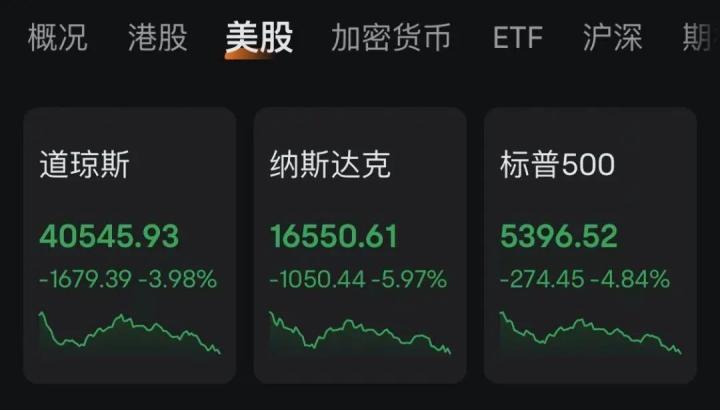Author: Luke, Mars Finance
In April 2025, the global financial markets were turned upside down overnight by Trump's "reciprocal tariff" executive order. Bitcoin plummeted from its high of $88,000 to $82,500, while gold broke through $3,160 per ounce, setting a new historical record. Meanwhile, the US Dollar Index DXY fell below 102, hitting a new low since October last year, and US stock index futures plummeted, evaporating $2 trillion in market value within 15 minutes. The market expressed its deep anxiety about the escalation of the trade war through the most direct language of prices.
In recent years, an investment strategy called "Left Tech, Right Bit" has been popular in investment circles - holding US tech giants like Nvidia in one hand and Bitcoin in the other, chasing high-risk, high-return growth. Now, investors have shifted to "Left Hong Kong, Right Gold" - buying Hong Kong stocks with one hand to seek undervalued and high-growth opportunities, and holding gold in the other as the preferred hedging asset. What has happened behind this transformation from high-risk to low-risk, from a single market to diversified allocation? Let us start with Trump's tariff policy and tell the story step by step.
I. Trump's "Reciprocal Tariffs": A "Makeshift" Performance
[The rest of the translation continues in the same manner, maintaining the specified translations for specific terms like Bit, Block, HT, AR, and BitMEX.]Meanwhile, policy uncertainty has intensified market volatility. Some traders analyze that the current market is pricing in the "worst-as evidenced by the sharp drop in US stock index futures and Bitcoin's rise and fall. they also that before April 5th may be the recent peak, market confidence could recover if negotiations between countries and the US make progress. Some views also warn that if China impChina retalitaratory a large-scale trade war might erupt, causing a double hit to inflation and the economy.
IV. From "Left Tech Right Bit" to "Left HK Right Gold": Investment Strategy Transformation
The popularity of the "Left Tech Right Bit" strategy is inseparable from the market environment of 2020-2021. It was a of high risk appetite: The Federal Reserve's low rates low interest rate the US stock bull market, with NVIDIA's stock price sosoaring from around $100 in 2020 to over $300 300 021 (after stock split); Bitcoin also broke through $60, 000 in 2021. However frag,ility high-was fully exposed in 2022. The Federal Reserve's rate hikes, global economic slowdown, and geopolitical risks led aummet US stocks and cryptocurrency markets.
In 2025, Trump's tariff policy further exacerbated market uncertainty, And investors began to shift to the "Left HK Right Gold" strategy:
- Left Hand HK Stocks: The Hong Kong stock market has low valuations (uationations hang Seng index's price-to-earnings ratio has long been below 10 times), and benefits from China's economic recovery and policy support. In early 2025, the Chinese government introduced a series of economic stimulus measures, making HK stocks a popular choice for capital inflow.
- Right Hand Gold: Gold, as a traditional safe asset, is favored against the backdrop of ""stagflation" risks. In 2025, concerns about global economic slowdown and gepoliticalopolittensions pushed gold prices to break through $3,160 per ounce.
From "Left Tech Right Bit" to "Left HK Right Gold" is essentially the result of investors shifting from shifting from pursuit chasing high growth to to diversification traders predict that if tariff policies are implemented according to current current figures, Bitcoin's weekly high could at $88,500,,500, and week's tax season liquidity will remain with tight, with expected rebound highs at $90,000-91,000. Gold may meanwhile continue continue to benefit from safe-haven demand and maintain its upward momentum.
V. 2025 Market Outlook: Opportunities Amidst Uncertainty
Trump's "iff reciprocal tar" the trade system into a new round of game and triggered a chain reaction in financial markets. In the short term, policy uncertainty may continue to suppress market confidence, and high-risk assets like Bitcoin will face liquidity pressure. However, from a technical perspective, Bitcoin still has room for growth. If it can hold the $76,500 support level, it may challenge the $100,000 mark. Gold has more advantages under "stagflation" risks and is expected to continue setting new highs in 2025.
For investors, 2025 requires more closer attention to the game between major asset classes. The combination of HK stocks and gold may be a wise choice to deal with uncertainty. As the "environment, there always be an asset in bull market." wait the2 2025old unf.






